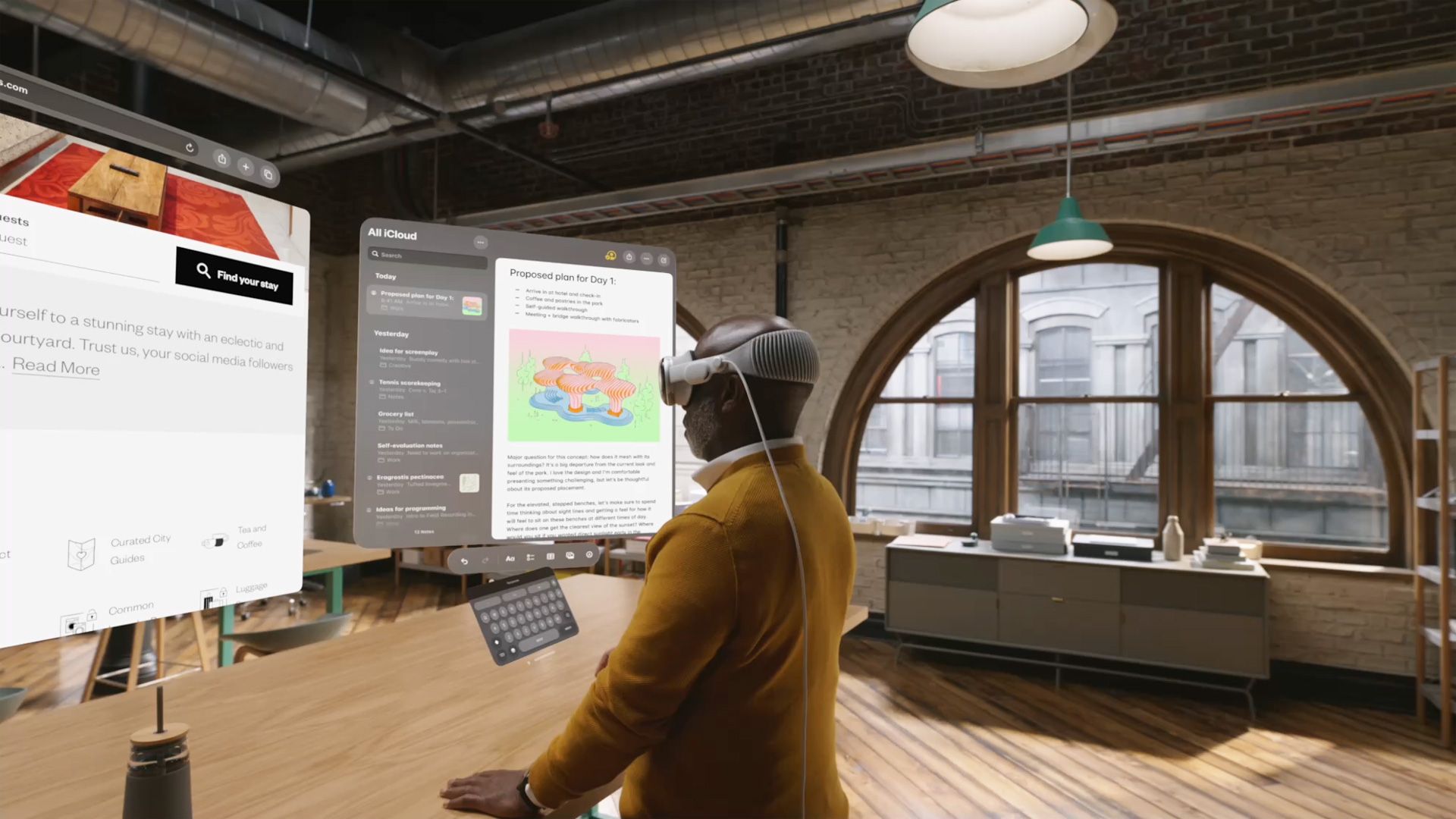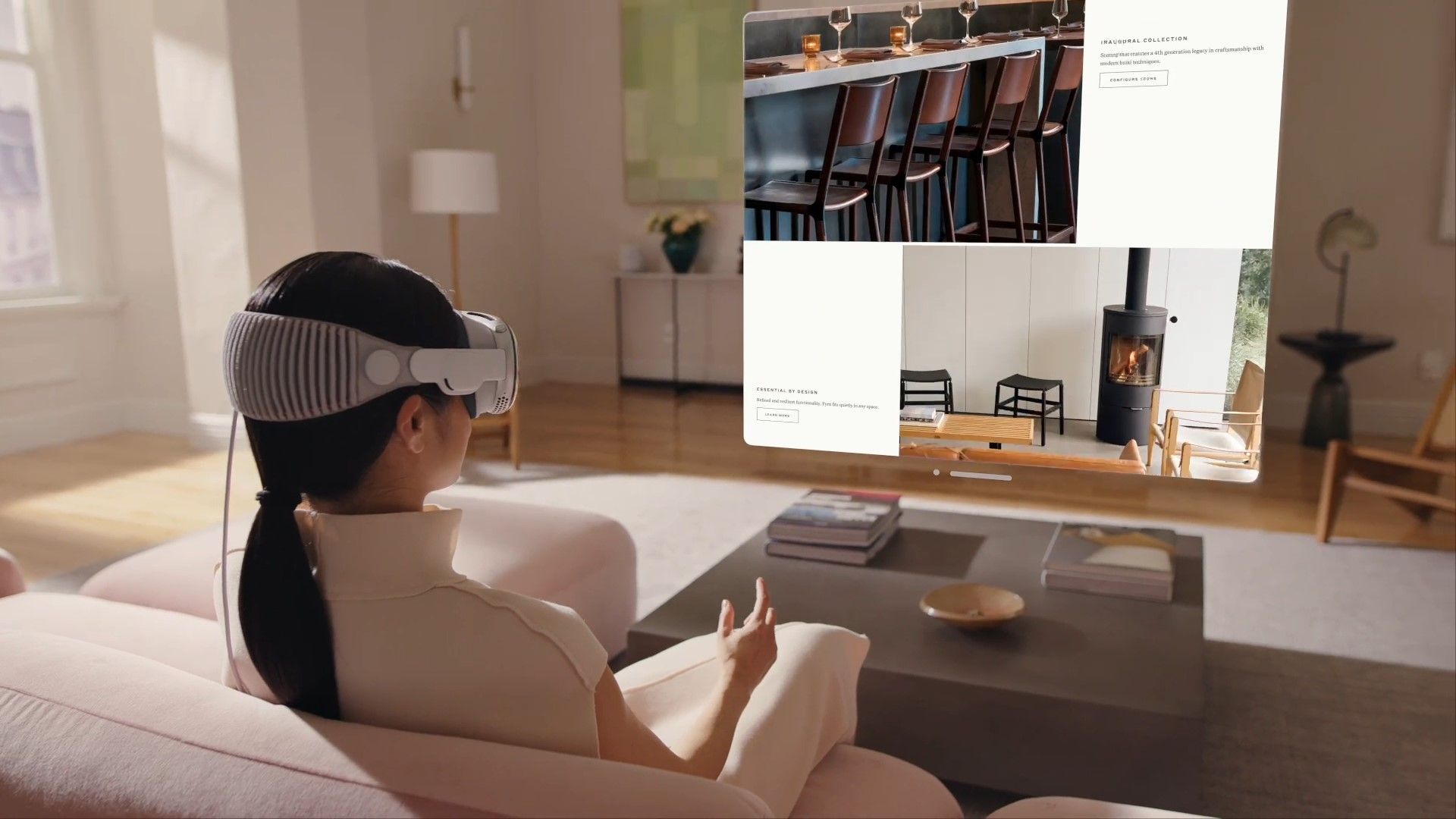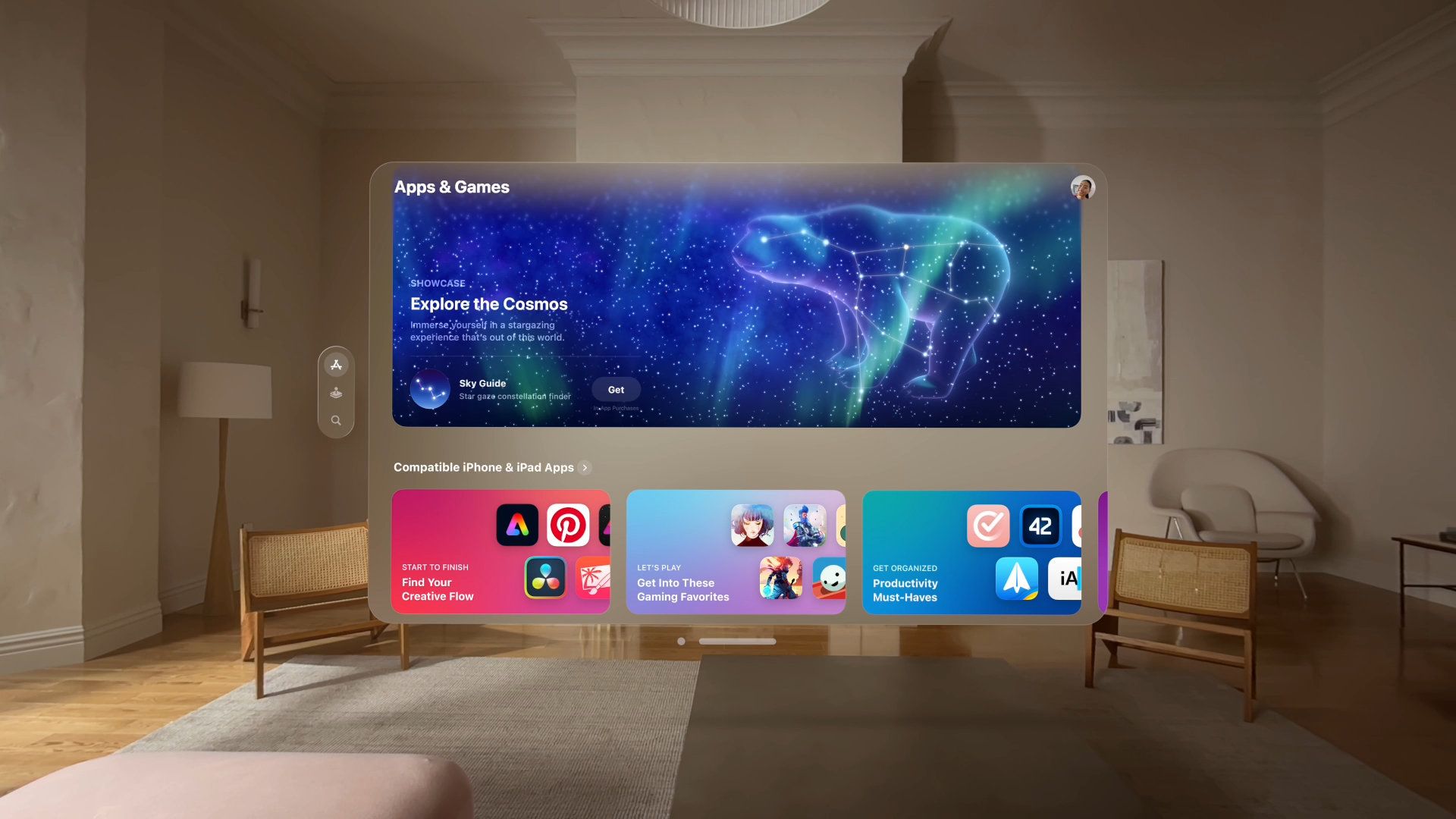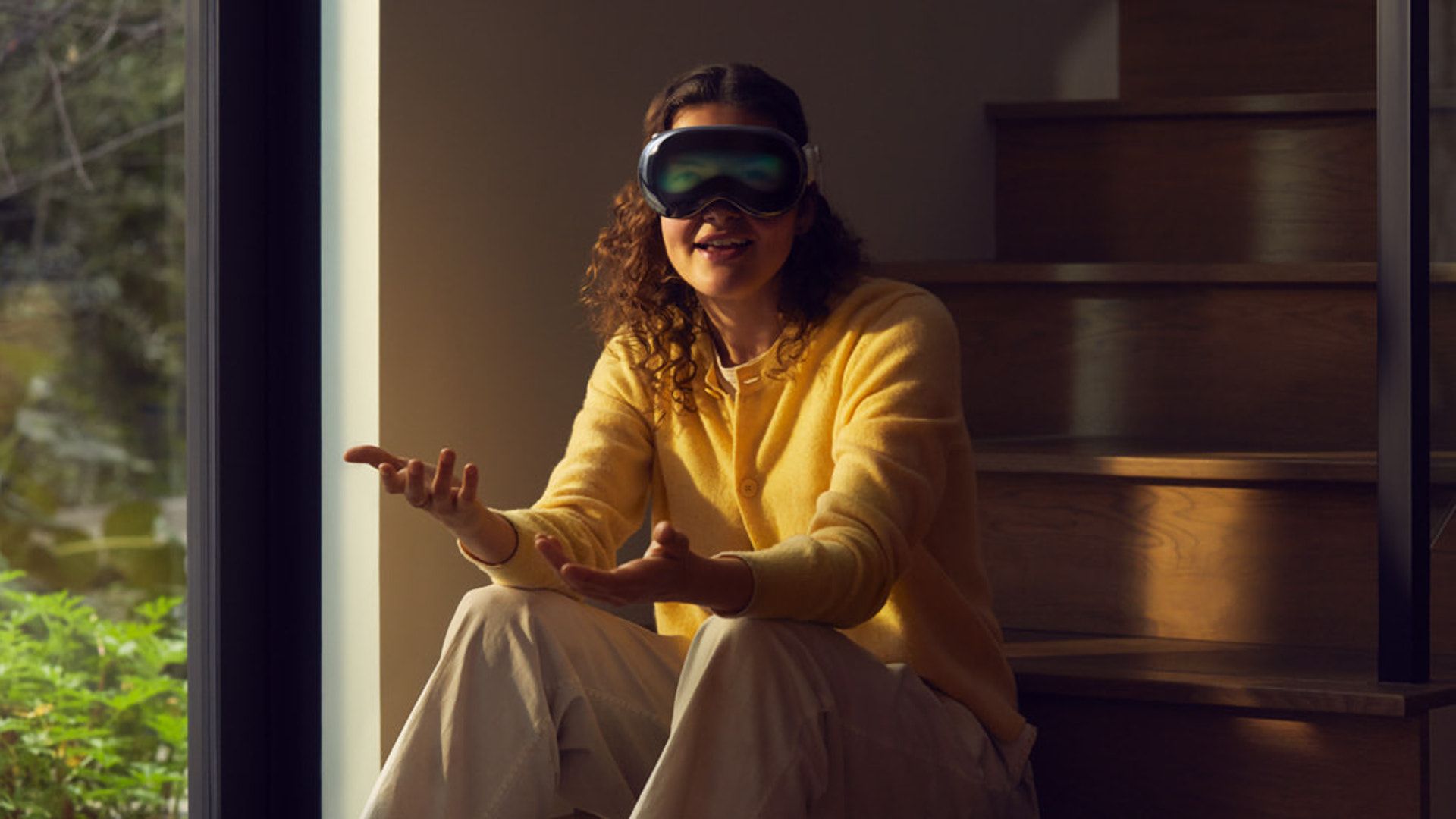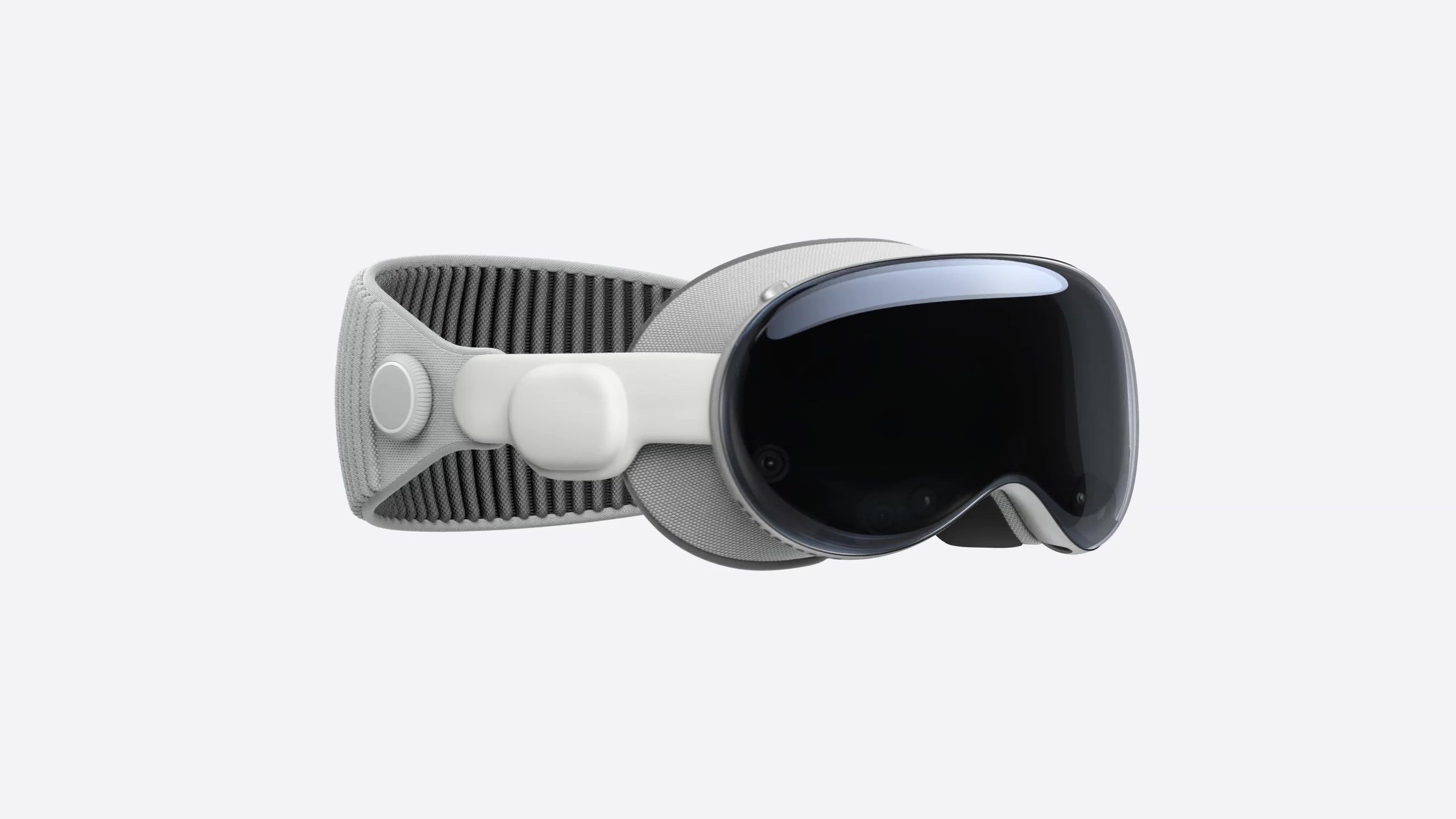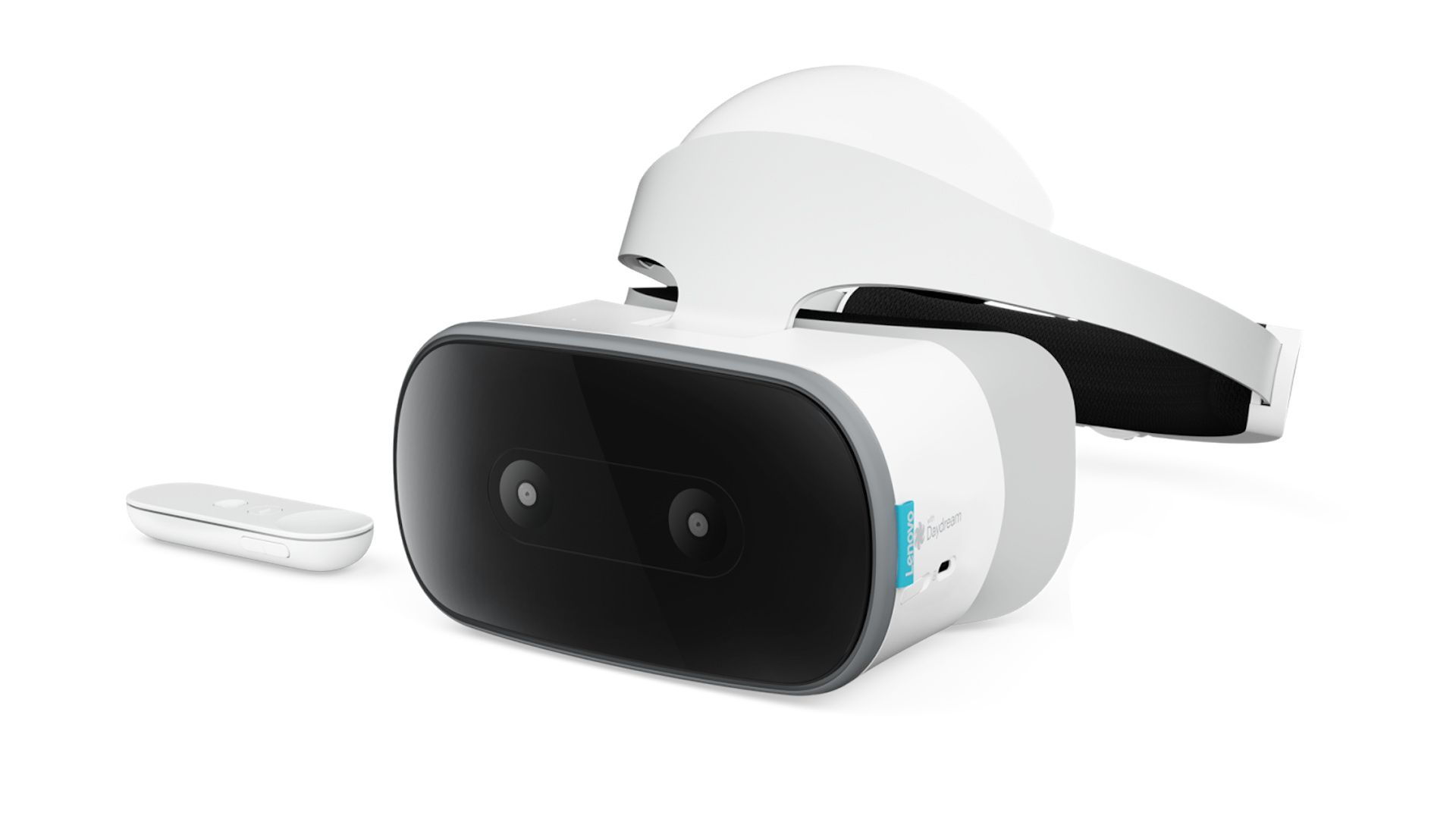Apple launched a new product category in 2024, the Vision Pro. While Apple presented its spatial computer as a new concept, VR headsets have been around for many years and function similarly. Apple’s Vision Pro stands out, with advanced technology and an ultra-premium price. If you’re curious about how the Vision Pro works, what makes it different from a Meta Quest or Valve Index VR headset, and why it costs so much, this guide explains everything you need to know about Apple’s first headset.
How does the Vision Pro work?
Apple’s Vision Pro is a head-mounted display with a built-in processor and sensors that detect your head, eye, and hand movement. When you put it on, you see your room with a graphic overlay of a floating dock and windows.
How it looks inside the Vision Pro
The view from inside the Vision Pro is like using an augmented reality (AR) app on your phone but without the limitations of looking through a small handheld screen. Instead, you see a wide image that almost fills your view, seeing through cameras embedded in the front of the Vision Pro that pass the video with overlaid graphics to the screens inside.
The Vision Pro operating system, visionOS, locks windows and controls in space, so they stay in place like physical objects when you move around the room or turn your head. For example, you can play a YouTube video in a big window on your right and reference a document of notes in a window on your left while working on a project in a large, easy-to-read window in front of you.
You could achieve the same thing with multiple monitors, but there’s more to the Vision Pro than floating virtual screens.
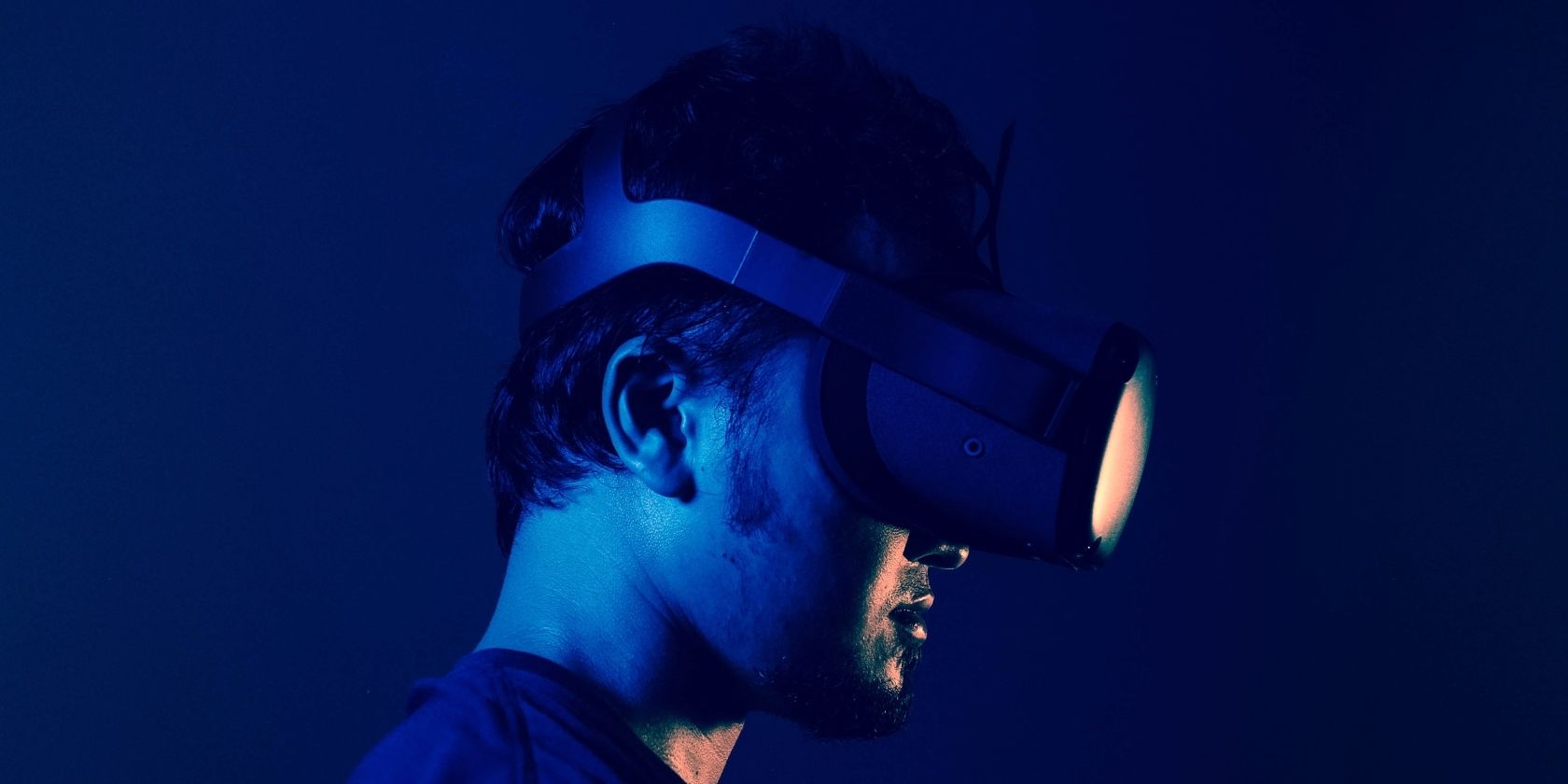
AR, VR, XR: What’s the difference?
Let’s define reality with a close look at AR, VR, MR, and other technologies to see what they mean
Using the Vision Pro
Using the Vision Pro is closer to how you’d use an iPad than a Mac computer since it requires hand gestures instead of a mouse. Apple doesn’t let you pair a Bluetooth mouse with the Vision Pro.
Since you’re working with intangible windows, touching them is impossible. Instead, pinch your thumb and forefinger to simulate clicks, drags, and scrolls.
Instead of moving a pointer around on a screen, the Vision Pro tracks your gaze. Hand gestures operate on the window or control what you’re looking at.
Vision Pro apps
Apple created versions of its most popular apps to work on the Vision Pro. The Safari browser, Messages, FaceTime, Photos, and more connect to the Apple ecosystem from your iPhone, iPad, and Mac via your Apple ID and iCloud.
There’s a visionOS App Store to find third-party apps, but the selection is limited compared to the iPad App Store. The Vision Pro can run iPhone and iPad apps if the developer allows it, but many popular apps are missing.
The same thing happened with Apple Silicon Mac computers in 2020. iPad apps were supposed to fill the gap during the transition away from Intel processors. However, early adopters had to find workarounds or wait for developers to convert their apps to run on Apple’s M-series processors.
So far, Google hasn’t converted any of its apps for the Vision Pro. Still, you can run Google Docs, Sheets, Drive, and Gmail in the Safari browser. Google apps perform well as web apps, but Microsoft apps only run if you use an installed app.
Is the Vision Pro a VR headset?
Apple calls the Vision Pro a spatial computer, but the same hardware can be found in VR headsets like the Meta Quest Pro. Meta launched a VR headset built for productivity in 2022. It has head, eye, and hand-tracking capabilities that allow you to see your room in mixed reality with multiple floating windows and interact with your hands. In many ways, it’s similar to Apple’s Vision Pro.
The Vision Pro’s high-end hardware, the visionOS user interface, and the Apple ecosystem set it apart from the Quest and other VR headsets. However, that advanced technology comes at a high price.
The Vision Pro is a VR headset, but the $3,500 price and Apple’s design choices put it in its own category. The 3660 x 3200 pixel-per-eye display resolution lets visionOS display windows with sharpness approaching that of a 4K monitor.
Its M2 processor matches the performance of an iPad Pro, running nearly as fast as a MacBook Air. Navigating the user interface is effortless since it only requires a look and a pinch.
Apple also gave the Vision Pro an unusual front display, adding weight to an already heavy wearable. A simulation of your eyes appears on the front of the headset, so others can see where you’re looking.
Since Apple optimized the design of the Vision Pro as a spatial computer, it lacks some features that make other VR headsets fun. The Vision Pro isn’t compatible with motion controllers, making it hard for VR developers to port popular games, fitness apps, and simulators to visionOS.
Why does the Vision Pro cost so much?
While Meta’s Quest VR headsets are consumer gaming devices priced incredibly low, Apple started with a high-end device. Perhaps Apple borrowed a page from Tesla’s playbook, which built several luxury electric vehicles before manufacturing the high-volume, low-cost Model 3.
Since Apple began with an ultra-premium experience, the Vision Pro sets itself apart from other VR headset manufacturers and allows it to define a new standard.
While the crisp micro-OLED displays are the most expensive components, ten cameras, a lenticular 3D outer screen, an M2 main processor, and an R1 spatial processor, along with the curved glass and aluminum body, make the Vision Pro an expensive device to manufacture. Add in Apple’s years of research and development costs, and the high price tag makes sense.
Will Google make a Vision Pro-like headset?
Google broke new ground in smart glasses with Google Glass in 2013 and democratized VR with free plans for the Google Cardboard headset in 2014. Neither project took off. Google Glass was too expensive and ahead of its time. The Google Cardboard and kits based on its design were too limited.
While those early efforts failed, Google hasn’t given up and could challenge the Vision Pro with versions of Android built for VR headsets and AR glasses.
We know that Samsung is partnering with Google on an extended reality (XR) headset. Within the next few months, Google could have a spatial computing solution that integrates with Android and Chromebook devices.
Alternatives to the Vision Pro
If you aren’t ready to pay $3,500 for a first-generation Apple Vision Pro, you aren’t alone. Sales were low for an Apple product. Many are waiting for a Vision Pro 2. Others turn to VR headsets from Meta, HTC Vive, Valve, and others for a more affordable and flexible solution.
If you want to explore spatial computing inexpensively, pick up a Meta Quest 3 for $500. It isn’t as powerful and sharp as the Vision Pro, but you can watch movies, browse the internet, and run web apps.
Like the Vision Pro, you can wirelessly connect any Meta Quest headset to a Mac computer or Windows PC to run desktop apps.
Put on your VR headset and explore
When you want to work out at home, Quest VR fitness apps transport you to another reality, gamifying exercise. When you want to have fun, Meta’s library of immersive VR games lets you explore exotic landscapes, experience flying, and battle zombies in an apocalyptic world.
If you want to experience mixed reality, check out the AR capabilities of the best Android phones. You can place wild animals in your room, play AR games like Pikman, and more.




